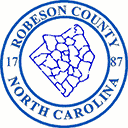What Is the Expanded Food and Nutrition Education Program?
go.ncsu.edu/readext?960704
en Español / em Português
El inglés es el idioma de control de esta página. En la medida en que haya algún conflicto entre la traducción al inglés y la traducción, el inglés prevalece.
Al hacer clic en el enlace de traducción se activa un servicio de traducción gratuito para convertir la página al español. Al igual que con cualquier traducción por Internet, la conversión no es sensible al contexto y puede que no traduzca el texto en su significado original. NC State Extension no garantiza la exactitud del texto traducido. Por favor, tenga en cuenta que algunas aplicaciones y/o servicios pueden no funcionar como se espera cuando se traducen.
Português
Inglês é o idioma de controle desta página. Na medida que haja algum conflito entre o texto original em Inglês e a tradução, o Inglês prevalece.
Ao clicar no link de tradução, um serviço gratuito de tradução será ativado para converter a página para o Português. Como em qualquer tradução pela internet, a conversão não é sensivel ao contexto e pode não ocorrer a tradução para o significado orginal. O serviço de Extensão da Carolina do Norte (NC State Extension) não garante a exatidão do texto traduzido. Por favor, observe que algumas funções ou serviços podem não funcionar como esperado após a tradução.
English
English is the controlling language of this page. To the extent there is any conflict between the English text and the translation, English controls.
Clicking on the translation link activates a free translation service to convert the page to Spanish. As with any Internet translation, the conversion is not context-sensitive and may not translate the text to its original meaning. NC State Extension does not guarantee the accuracy of the translated text. Please note that some applications and/or services may not function as expected when translated.
Collapse ▲The Expanded Food and Nutrition Education Program (EFNEP) started in 1969 as the first Nutrition Education program for low-income families. EFNEP’s mission is to assist low-income families and youth with knowledge and skills in food management, the importance of food safety, improved physical activity, and improved dietary intake. In 2022, EFNEP served 40 counties here in North Carolina. Last year 13,029 youth across the state participated in the 4-H EFNEP program, with 1,629 families participating in EFNEP. EFNEP makes a real difference here in the state of North Carolina, with 97 percent of EFNEP participants improving dietary intake, 53 percent now doing some type of physical activity daily, 96 percent practicing better food resource management, and 86 percent improveing food safety habits.
Here in Robeson County, students get to participate in 4-H EFNEP six-week classes that teach and put their skills to the test weekly. Each grade level (kindergarten through 12) has a curriculum that follows the NC standards. In one example of our curricula, Teen Cuisine, students in grade levels 6–12 participate in learning knife skills, using MyPlate to create and make healthy meals and snack, reading and understanding the Food Nutrition Label, and the importance of a great breakfast to start your day. Along with each lesson, students also get skill builders to help them practice their new skills at home. If you would like to learn more about EFNEP be sure to visit our website (ncefnep.org) for more information about the program, along with tips and recipes. Below you will find an EFNEP recipe that is sure to be a crowd pleaser, and is very affordable to make.
Beef & Double Broccoli
Serves 4
Ingredients
- 4 cups broccoli, separated and stems intact
- 1 lemon (or 3 Tbsp lemon juice)
- 1 cup brown rice, uncooked
- 2 cups water
- 2 Tbsp vegetable oil
- 1 lb lean ground beef
- 5 cloves garlic, smashed (or 1 Tbsp garlic powder)
- 1 Tbsp minced ginger (or 2 tsp ginger powder)
- 2 tsp salt
- 1 tsp black pepper
- ¼ cup low-sodium soy sauce
- 2 stalks of scallions, greens and whites, chopped
Directions
- Preheat your oven to 400 degrees Fahrenheit.
- Toss half of the broccoli (2 cups) in the lemon juice. Season with half the salt and pepper and drizzle with the vegetable oil.
- Bake uncovered on a sheet pan for 15 to 20 minutes until the edges are crispy. Set aside to cool.
- In a large skillet, over medium heat, add the ground beef and use a spoon to break the beef apart slightly, keeping large bits intact.
- Add the garlic, ginger, the remaining salt and pepper, and the other half of the broccoli.
- Cover the pan with a lid and let cook on low heat for about five minutes. Meanwhile, cook the rice per package directions, usually 2 parts water for 1 part of rice.
- After five minutes, add the soy sauce to the meat mixture and stir to combine. Add the scallions.
- Once the meat reaches an internal temperature of 160 degrees Fahrenheit, serve atop steamed brown rice with roasted broccoli.
For more information, contact Joanna Rogers, Extension 4-H Youth EFNEP Assistant, at 910-671-3276, by Email at Joanna_Rogers@ncsu.edu, or visit our website at //robeson.ces.ncsu.edu/.




